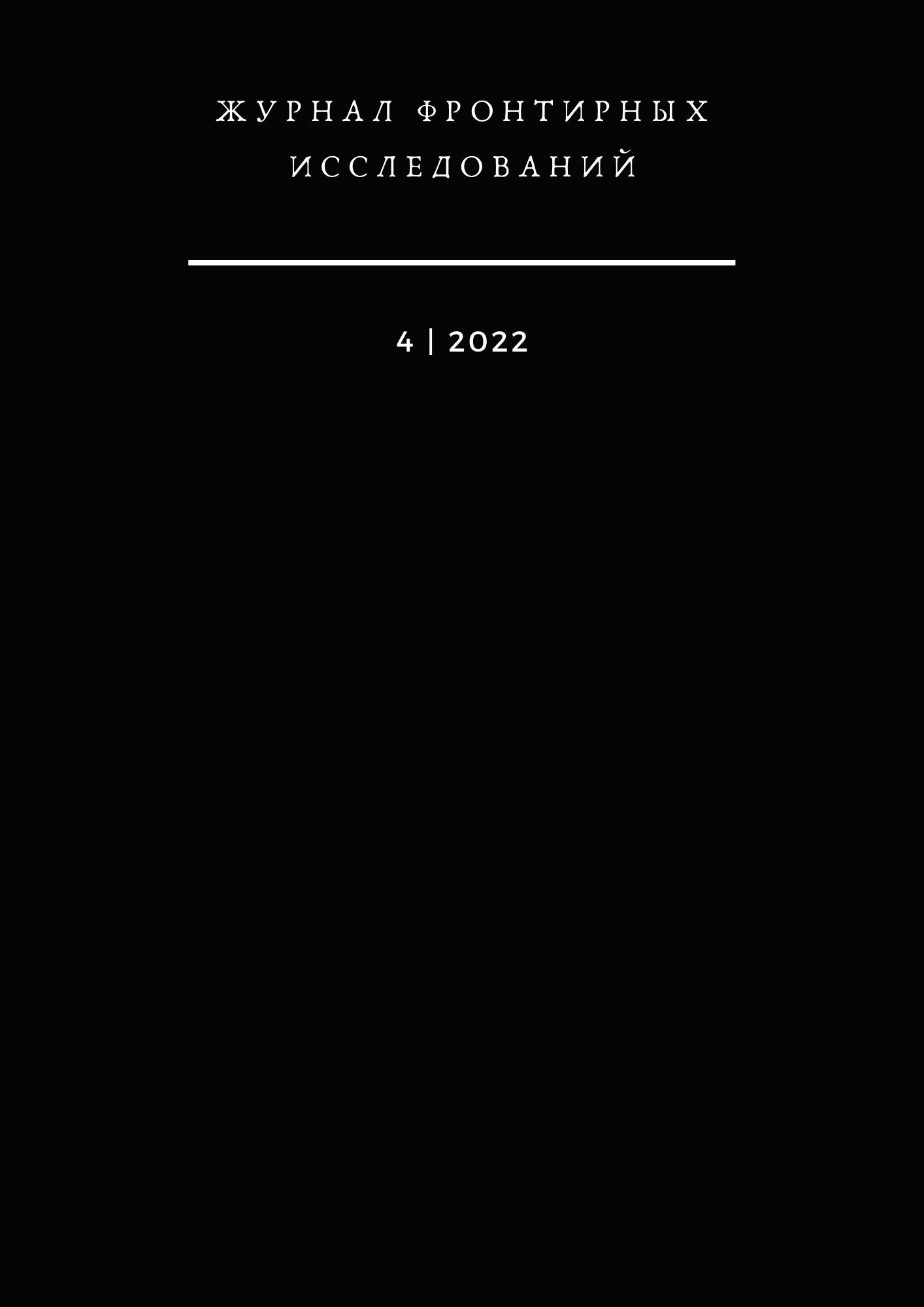Abstract
The article presents an analysis aimed at identifying an axiological strategy of forming a positive image of Komsomolsk-on-Amur in different historical periods. When creating a positive image of a provincial city, a regional identity is formed, which contributes to solving one of the most pressing problems for the Russian Far East, related to the need to preserve human resources.
The paper examines the modern stage of forming a positive image of the city based on the example of the electronic version of the newspaper “Far East Komsomolsk-on-Amur”, since the media have different functions in the modern society, including the informative and ideological functions. The identified ways of creating a positive image include building a new model of life during the construction of the city, aimed at a bright future of the city which is full of cultural events, spreading information about happy life in the city by fixing and informing the whole country about the achievements of Komsomolsk-on-Amur residents and updating information about the heroic past of the city. So far, the methods influencing the image of Komsomolsk-on-Amur have not undergone significant changes since the Soviet times. Therefore, the analysis of the texts taken from the city's newspapers has made it possible to determine the leading dominants in the axiological strategy of creating a positive image of Komsomolsk-on-Amur.
References
Couldry, N., & Rodriguez, C. (2018). Media, Communication, and the Struggle for Social Progress. Global Media and Communication, 14(2), 173–191. https://doi.org/10.1177/1742766518776679
CPSU Central Committee USSR Council of Ministers Decree of July 8, 1974, No. 561. (n. s.). https://docs.cntd.ru/document/901853768 (In Russian).
Dagaeva, E. A. (2017). Jevoljucija metodologicheskih podhodov k analizu ponjatija “Imidzh”. Vestnik Taganrogskogo instituta upravlenija i jekonomiki, 2(26), 84–87. (In Russian).
Dal'nevostochnyj Komsomol'sk. (n.d.). http://dvkomsomolsk.ru (In Russian).
Dal’, V. I. (n. d.). Explanatory Dictionary of the Living Great Russian Language. https://www.slovardalja.net (In Russian).
Dobrosklonskaya, T. G. (2005). Issues in the Study of Media Texts. A Study of Modern English Media Speech. Editorial URSS. (In Russian).
Dorodnov, E. V. (1980). Guidebook. Knizhnoe izdatel'stvo. (In Russian).
Dzialoshinsky, I. M. (2005). Manipulative Technologies in Mass Media. Vestnik Moskovskogo Universiteta. Seriya 10. Zhurnalistika, 2, 56–75. (In Russian).
Dzialoshinsky, I. M., & Dzialoshinskaya, M. I. (2015). From Information Support to the Information Partnership. Theoretical and Practical Issues of Journalism, 4(4), 349–365. https://doi.org/10.17150/2308-6203.2015.4(4).349-365 (In Russian).
Fedorov, A., & Levitskaya, A. (2018). Comparative analysis of the development of mass media education in the Commonwealth of Independent States (CIS) countries. Media Education (Mediaobrazovanie), 58(3), 39–62. https://doi.org/10.13187/me.2018.3.39
Graber, D. A. (1997). Mass media and American politics. A division of congressional quarterly Inc.
Kubryakova, E. S. (2012). In Search of the Essence of Language: Cognitive Studies. Znak. (In Russian).
Levy, H. (2018). Disrupting the Old Periphery: Alternative Media, Inequality and Counter-Mapping in Brazil. Westminster Papers in Communication and Culture, 13(2), 61–76. https://doi.org/10.16997/wpcc.287
Lyulko, A. N. (2012). Konceptual'nye aspekty formirovanija imidzha goroda. Sibirskij Mezhdunarodnyj, 14, 68–74. (In Russian).
Oleynik, E. B., Schmidt, Y. D., & Karp, D. B. (2019). Outflow of Population from the Regions of the Russian Far East: Trends and Reason. Jekonomicheskie nauki, 12(181), 300–305. https://doi.org/10.14451/1.181.300 (In Russian).
Parshina, O. D., & Ivanyan, E. P. (2020). Axiology of the Province Phenomenon in Russian Mass Media of the Beginning of the 21st Century. Nauchnyi Dialog, 8, 123–140. (In Russian).
Petkova, O. V. (2016). Imaging the Country in Crisis Conditions. In L. V. Ostapenko & I. A. Subbotina (Eds.), Ethnosociology Yesterday and Today (pp. 277–281). Institute of Ethnology and Anthropology, Russian Academy of Sciences. (In Russian).
Seidov, V. G. (2016). The place and role of mass and communication media in the system of international relations. Russian Journal of Regional Studies, 2(95), 107–116. (In Russian).
State program “Social and Economic Development of the Far Eastern Federal District”. (2019, November 10). http://government.ru/rugovclassifier/section/2649/ (In Russian).
Stier, S. (2018). Election Campaigning on Social Media: Politicians, Audiences, and the Mediation of Political Communication on Facebook* and Twitter. Political Communication, 35(1), 50–74. https://doi.org/10.1080/10584609.2017.1334728
Togoshieva, N. E. (2010). Axiological Strategies of Argumentative Discourse (on the Material of Political Rhetoric). Bulletin of BSU, 11, 98–102. (In Russian).
Ushakov, D. N. (n. d.). Ushakov's Dictionary. https://ushakovdictionary.ru (In Russian).
Usov, P. (2019). City at the Origin of the Mainline: Komsomolsk-on-Amur – Starting Point of the Bamsk Branches. https://gudok.ru/content/bam/1461282/ (In Russian).
Vasilyeva, L. V. (2010). Rol' i funkcii SMI v sovremennom obshhestve. Vestnik Amurskogo gosudarstvennogo universiteta, 50, 109–112. (In Russian).
Voronina, N. I. (2012). Culture of Province in the Space of Contemporary Politics. Russian Journal of Philosophical Sciences, 12, 80–88. (In Russian).
* Social network recognized as extremist in Russia

This work is licensed under a Creative Commons Attribution 4.0 International License.

